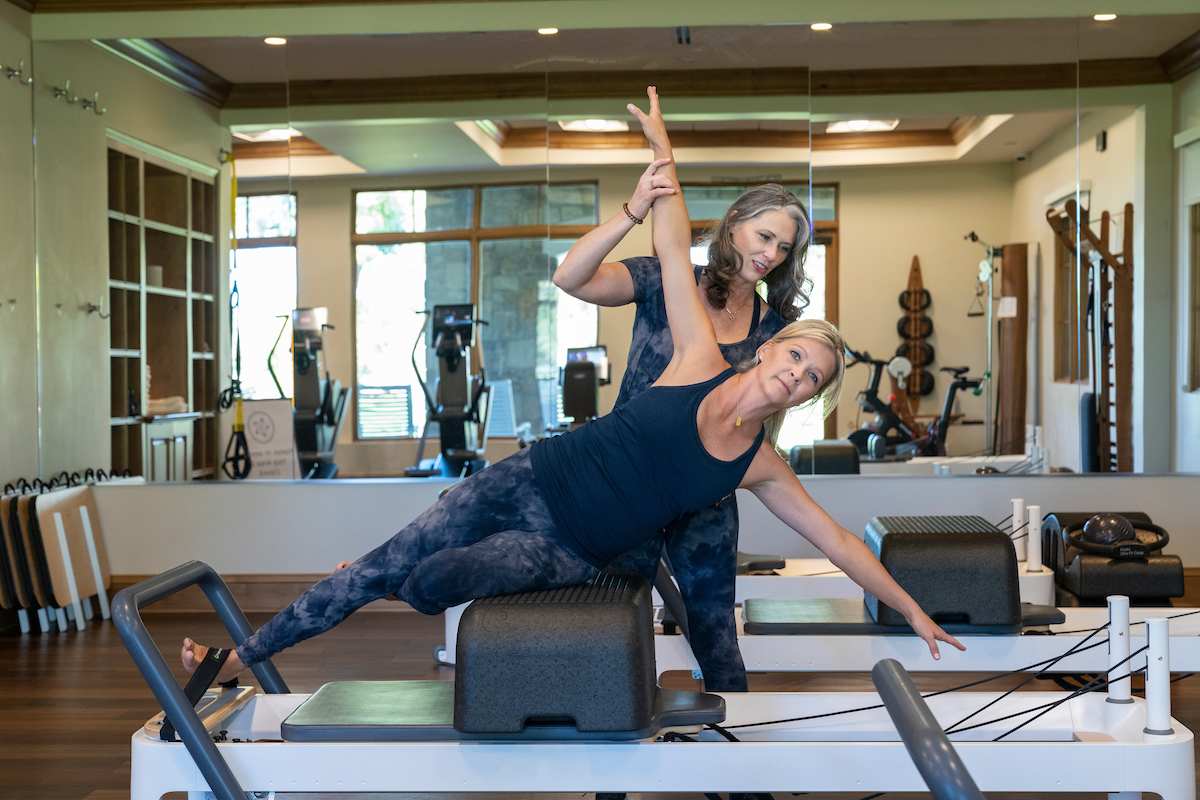
Pilates emerged in the 1920s as a means of fostering a connection between mental and physical health. It is named after its inventor, Joseph Pilates, who believed his method of highly controlled breathing and body movements could cure various medical ailments.
While studies have yet to solidify Pilates as an actual remedy for any medical condition, it has certainly been demonstrated as a way to improve mental and physical health. It was initially taken up by dancers, who found the method’s focus on balance and core work to be beneficial to their performances. Today, Pilates is accessible to anyone and is touted as a safe and effective way to build strength and flexibility.
Pilates vs Yoga
Pilates and yoga share many common elements. Both are considered mind-body exercises, meaning there is as much of an emphasis on conditioning the mind (largely through breathing) as there is on strengthening the body. Some of the exercises themselves are nearly identical, but with different names.
The main difference between pilates and yoga is the spiritual element. Yoga tends to be more overtly spiritual, while pilates might be considered more physiological.
4 Lesser Known Health Benefits of Pilates
Pilates is generally recognized for its ability to tone muscle and increase flexibility, but there are a few other benefits you may not be aware of:
Posture Improvement
Alignment of the body is a central theme to Pilates, which uses careful exercises to develop the abdominals, lower back, shoulder, and gluteal muscles. Each exercise is done slowly and purposefully, with proper form being paramount. This emphasis on form and alignment often translates into better posture during daily activities. Better posture, in turn, results in reduced muscle fatigue and pain.
Better Balance
In the human body, the core is typically the center of gravity. Somewhere below the navel is the anchor for our entire sense of equilibrium. Strengthening this area is a critical aspect of Pilates, and it is one of the reasons dancers popularized the Pilates method when it was first developed: a strong core improves balance.
Reduced Stress and Anxiety
Pilates effectively reduces stress in two ways. First, exercise in any form has been associated with an increase in endorphins. Endorphins are a neurotransmitter whose primary purpose is to mitigate feelings of physical pain. When they are released, a general feeling of well-being and even euphoria can result.
Second, Pilates incorporates deep breathing exercises. Slow deep breaths relax the vagus nerve in your abdomen, which then releases a second neurotransmitter: acetylcholine. Acetylcholine slows the heart rate and increases digestive enzymes, a signal to the brain that there is no danger. In other words, acetylcholine can counteract your fight or flight response in times of high stress.
Reduced Risk of Injury
Pilates uses predominantly low-impact exercises to build strength and flexibility. This not only reduces risk of injury during pilates, but in other activities as well. Stronger muscle groups protect the body from trauma during more high intensity exercise, such as weightlifting. Enhanced flexibility also reduces the risk of injuries due to hyper-mobility, like ligament sprains or muscle strains.
Getting Started With Pilates
The low-impact nature of pilates makes it a fantastic way to exercise at any age and ability level. At Columbine Country Club, we offer guided instruction in this method to help you learn safely and achieve the best results. To schedule your pilates session, visit the club calendar through your membership portal or call our office today. |